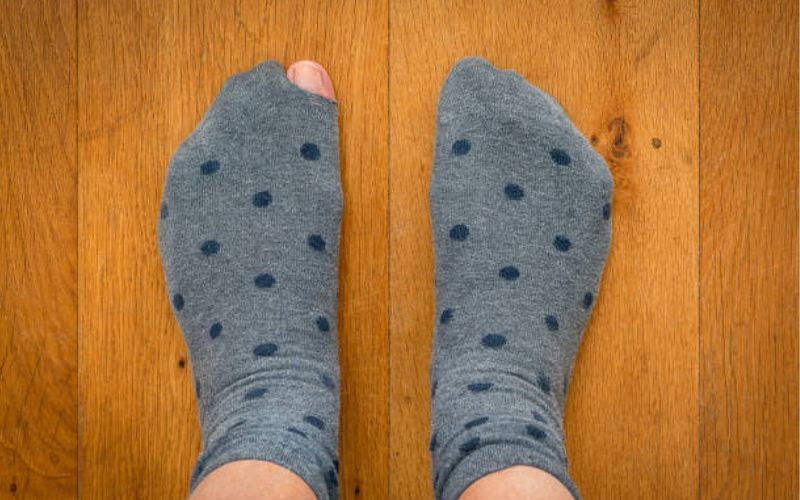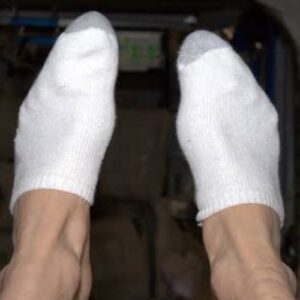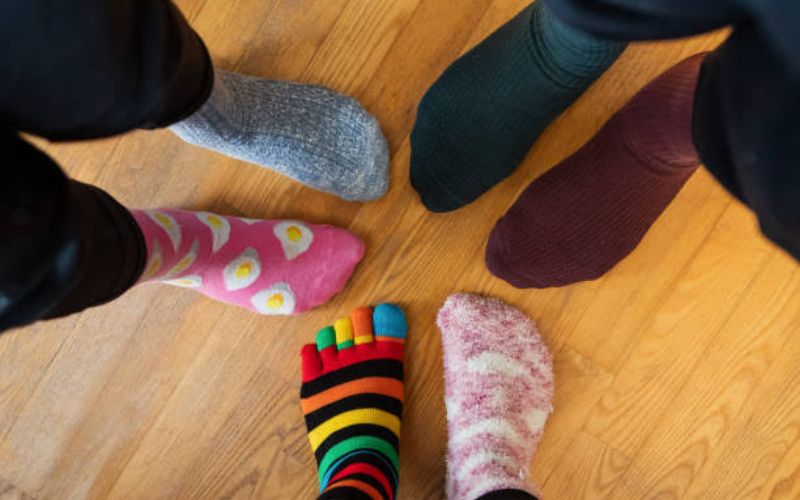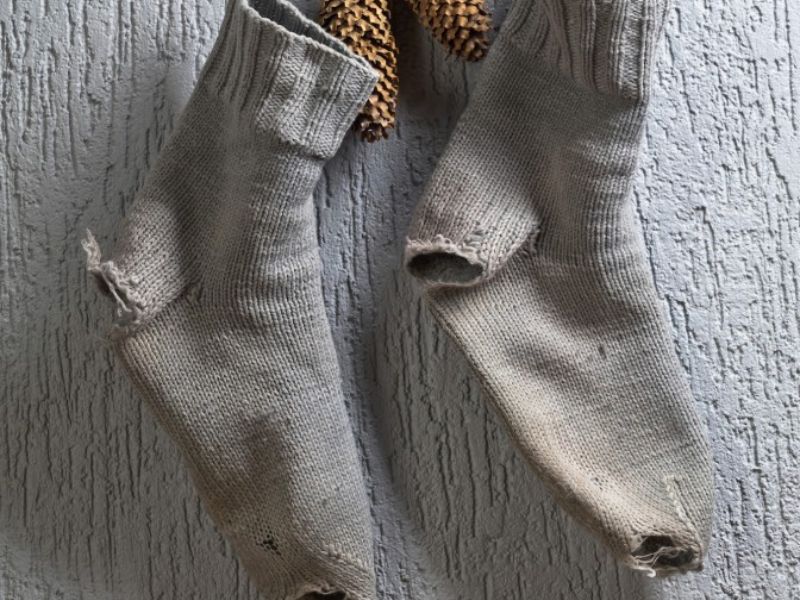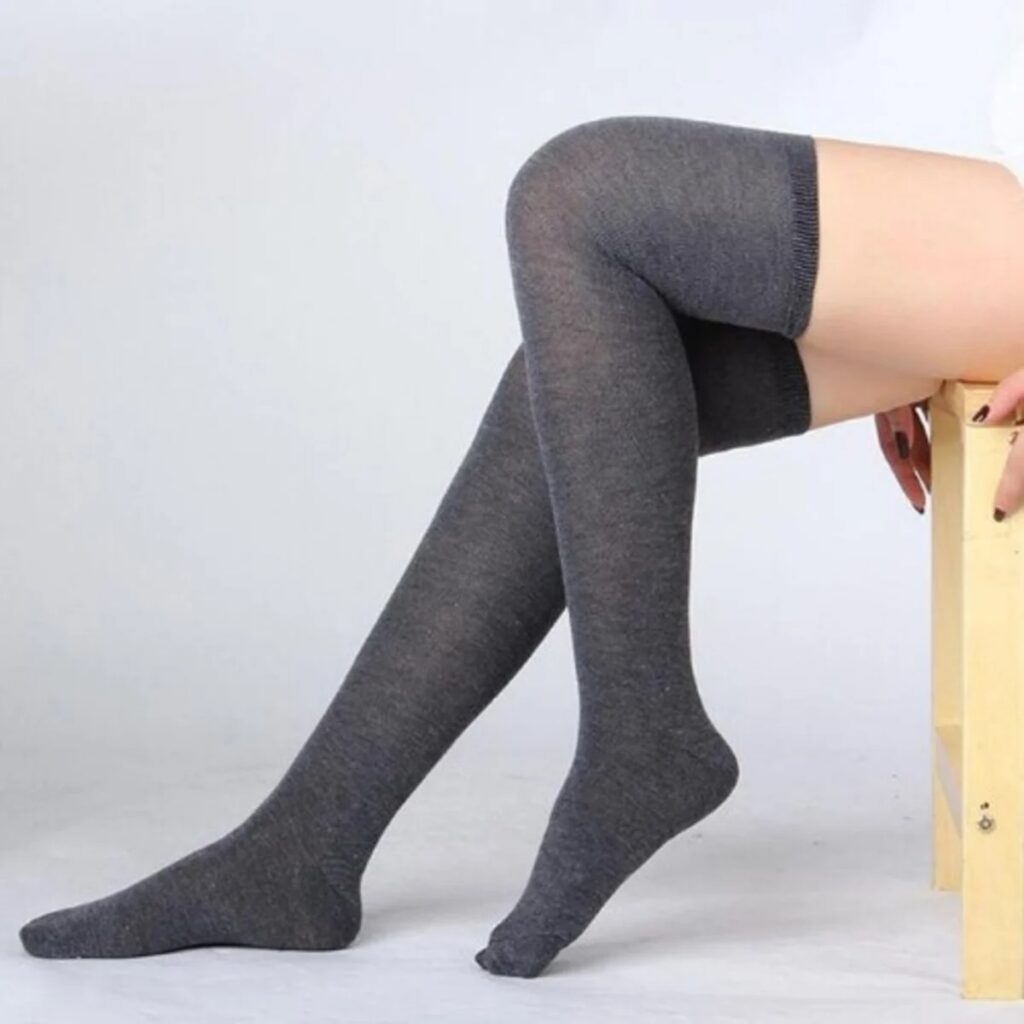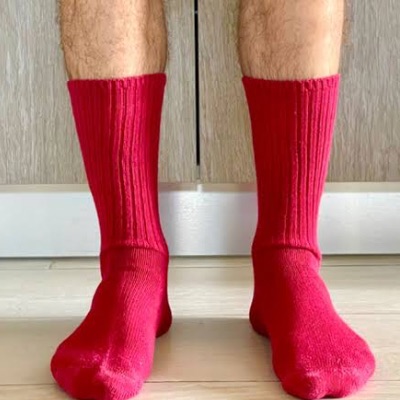Over and over your socks keep getting holes. You recently got a new pair and boom, they’re open again! It is frustrating, honestly.
But now, let’s face it. Quite a lot of factors could be causing your socks to get holes, maybe quicker than you expected. I don’t believe that anyone would like to be spending money on things that won’t serve them.
But to solve the problem, we must get to the root and find out exactly what the problem is. In this post, we shall answer the question of why socks get holes and how to avoid them.
1. Wear and Tear
The primary reason why socks develop holes is wear and tear. This process occurs gradually over time as the socks are exposed to repeated friction and stress during everyday activities.
Have you noticed that every step you take involves your feet rubbing against the inner walls of your shoes? This constant friction gradually weakens the fabric of the socks in the pressure points like the toe, heel, and ball of the foot.
How to prevent it
Honestly, wear and tear will happen as long as the socks remain in use. However, consider having many pairs of socks so that you don’t overuse one.
Also, ensure you invest in quality socks made with durable materials with strong construction. This leads us to the second reason why socks get holes.
2. Poor Quality
Yes, just like in any other garment, socks of poor-quality materials tend to get holes easily. This could be in the form of inferior materials that lack the durability needed to withstand everyday wear and tear, or subpar stitching and construction.
From my experience and of course, instinct, weak seams, and loose threads are more prone to unraveling and ultimately leading to holes. Similarly, cheap socks made from thin fabrics will wear out quickly compared to those with reinforced pressure areas.
How to prevent it
It’s simple! Invest in socks from reputable brands known for their quality and craftsmanship. Although they might be a little more expensive, they often provide better value for money in the long run.
If you need help to make informed choice of the quality of socks you buy, then consider the following:
- Choose socks made from durable materials like cotton, wool, and high-quality synthetic blends like spandex, nylon, and polyester.
- Inspect the socks’ construction to be sure it’s top-notch. High-quality socks typically have strong stitching and well-finished seams and are reinforced in high-pressure areas i.e., toes and heels.
- Online reviews and customer feedback can be beneficial in finding ideal socks for any occasion.
- Although price is not always a guarantee of quality, it helps. Cheaper socks are most likely to be made with inferior materials and poorly made.
3. Poor Shoe Fit
Poorly fit shoes do not only cause a hell of discomfort but can also destroy your socks. They create excessive friction and pressure on specific areas of your feet.
For instance, a tight or narrow toe box in shoes can squeeze your toes together, potentially causing toenails to press against the sock fabric. This pressure can puncture or wear down the sock material, leading to holes.
On the other hand, shoes that are too big aren’t safe either. Large shoes cause your feet to slide around inside. This leads to your socks bunching and folding over. This additional strain makes it easier for holes to form in the socks.
How to prevent it
Here, you must wear shoes that fit comfortably and provide proper support. Consider replacing shoes that you’ve outgrown and those that are worn out.
If you struggle with finding the right size, visit a shoe store and have your feet measured to determine the accurate size.
And when buying shoes, pay attention also to the toe box space. It should provide ample space for your toes to move naturally.
4. Long Toenails
Remember the torture you go through when you lie in the same bed with someone with long toenails? Or, you can’t relate?
That’s similar to what happens to socks with long toenails. Overgrown toenails develop sharp edges that easily poke through the sock fabric when you walk or do any other activity.
From a little puncture, the holes expand until they become so bad.
How to prevent it
The first thing you must do is make a habit of regularly trimming your toenails. If you don’t have one already, get yourself a good pair of toenail clippers or scissors.
Cut the nails straight and across and don’t go too short. After trimming, take some time to smooth out the edge with a nail file or emery board. This will remove any sharp spots that might damage your socks.
You can make this your weekly routine. However, if you find it challenging to do so, seek professional help in your favorite spa.
5. Wrong Washing and Drying Practices
Some people don’t care how they wash their garments. They just throw everything into the washing machine without any consideration whatsoever. Such practice is among the reasons why socks get holes.
Practices like aggressive washing and overloading the washer can lead to excessive friction. Others like drying at high temperatures, using bleach, and washing with items that snag, like velcro and zipper, weaken the sock fabric which eventually leads to holes.
How to prevent it
New pairs of socks come with a care label. Before you even begin to wear it, check the label for appropriate care instructions. You need to follow the instructions to maintain the integrity of the socks.
Wash socks using a delicate or gentle cycle to reduce the effects of abrasion and friction. When you wash, opt for mild ones that won’t be hard on the fabric.
Above all, do not throw everything into the washing all at once. Wash socks separately so that you give them specific attention and to prevent friction with other items.
Whenever possible, air dry your socks instead of using a dryer.
6. Pet Bites
Yes, we must acknowledge that pets bring joy, companionship, and even a sense of family into our lives. However, we can’t deny that these furry friends can inadvertently become the reason why socks get holes.
Puppies and kittens, for example, have the instinct to chew on objects as a way to explore and soothe their teething discomfort. An unfortunate sock could become a convenient scratching post for cats too.
It doesn’t matter the animal, pets generally can develop a taste for clothing, and your socks might be an easy target.
How to prevent it
Protecting your socks from pets requires a combination of redirection, supervision, and training. Firstly, keep your socks in drawers, bins, or closets that are out of your pet’s reach.
Secondly, when your pets are active keep a close eye on them especially if they show interest in socks. You might also want to invest time in training your pets to understand simple commands like “leave it”, and “drop it”.
Alternatively, you can offer them a variety of pet toys that are designed for their chewing and play needs. Toys that bounce or squeak are sometimes a good option.
7. Pest Damage
Although pest infestation is a rare cause of holes in socks, it could happen if you pay less attention. Pests like clothes moths and carpet beetles feed on natural fibers like cotton and wool. Socks made from these materials become a soft target when they become exposed to these pests.
Sometimes, they do not need to mature to eat up your socks. For instance, when clothes moths lay eggs on your clothing, the larvae which are voracious eaters chew up the fiber ruthlessly.
How to prevent it
In most cases, pests attack socks and clothing stored in susceptible areas like dark closets and damp basements. If you plan to keep the socks away for a long time, maybe your thick wool winter socks, we recommend you put them in well-sealed containers or plastic bags.
Pests will always breed in undisturbed areas. So periodically inspect your storage spaces and eliminate any signs of pests like small moths or larvae. Consider using pest deterrents like lavender sachet or cedar block in the storage areas.
8. Inadequate Shoe Cushioning
Do you wear shoes with insufficient cushioning? If yes, then be ready to deal with sock holes, and here’s why.
Shoes with poor insoles and other cushioning features do not absorb shock impacts effectively, thereby transferring more force to your socks.
Due to this direct contact with the hard parts of the shoes, lots of pressure points are created within your shoe. This causes specific areas of your feet to rub against the sock fabric more vigorously, eventually leading to holes.
How to prevent it
Aside from wincing due to the discomfort caused by poorly cushioned shoes, you will also need to spend more money on socks every now and then. Invest in shoes that provide proper cushioning and support to your feet.
Alternatively, get cushioned insoles or orthotics to enhance your shoes that lack proper support. Inspect your shoes regularly too and replace worn-out insoles as soon as possible.
9. Incorrect Sock Size
You know, one common reason socks end up with holes is something we might not always think about. It is wearing the incorrect sock size. It happens to the best of us, and it’s a sneaky culprit when it comes to sock wear and tear.
When you wear socks that are either too small or too large, they don’t fit your feet properly. If they’re too tight, they can stretch and strain the fabric, making it more prone to holes, especially around the toes.
On the flip side, if they’re too big, they can bunch up and create friction inside your shoes, causing wear and tear.
How to prevent it
It’s simple! Stick to your size. Start by knowing your accurate shoe size. Then match your sock size to the corresponding shoe size. This is helpful especially when you’re buying new pairs.
If you are trying a new brand or a different type of socks, consider trying them on before getting more. With this, you can confirm whether they fit well or not.
10. Exposure to Chemicals
Some chemicals in detergents or fabric softeners can be harsh on sock fiber. Over time, these chemicals can weaken the fabric, making it more prone to developing holes.
Even though we don’t see it happening, it’s there, slowly tearing down our trusty socks.
Other culprits under this guise include bleach, stain remover, and stain treatment.
How to prevent it
To minimize the impact of these chemicals on your socks, you need to opt for milder detergents, stain removers, and fabric softeners.
Rinse the socks thoroughly and ensure you remove as much residue as possible.
11. Manufacturing Defects
There are situations where new socks suddenly get holes. In such instances, it might not be your fault but as a result of a manufacturing defect that went unnoticed.
These flaws could be in the form of thin areas, weak seams, or inconsistency in thickness. When this is the case, the socks are prone to develop holes easily..
How to prevent it
The only solution to this is to be more mindful when buying socks. Before wearing new socks, inspect them for any visible defects, loose threads, or weak spots. Return or exchange socks with any issue.
Learn to choose socks from reputable brands. Such brands are more likely to produce socks with fewer manufacturing defects.
How Long Should Socks Last?
The short answer is, it depends. But in reality, a lot of factors play a significant role in the durability of socks.
For specificity’s sake, low-quality socks do not last more than 6 months. Mid-range ones from reputable brands can last anywhere between 1 to 2 years. Premium socks made from quality and craftsmanship can last 2 to 5 years or even longer.
However, what will determine how long socks last include:
- Socks quality: Socks made from quality materials and solid construction maintain longer durability.
- Frequency of use: If you wear and wash your socks more often, then the shorter the lifespan is likely to be. It’s common sense that socks you wear daily will wear out faster than those you seldom wear.
- Activity Level: Can you compare socks used for intense physical activity with ones you wear to the office? Obviously, the former will wear out faster.
- Care Practices: Care and maintenance practices also affect how long socks last. If you follow care practices like washing in cold water and air drying, you likely wear the socks longer.
Socks wear out for several reasons. Having reviewed most of these causes and how to prevent them, I guess it’s all in your hands now to maintain your socks properly.
RECOMMENDED POSTS

